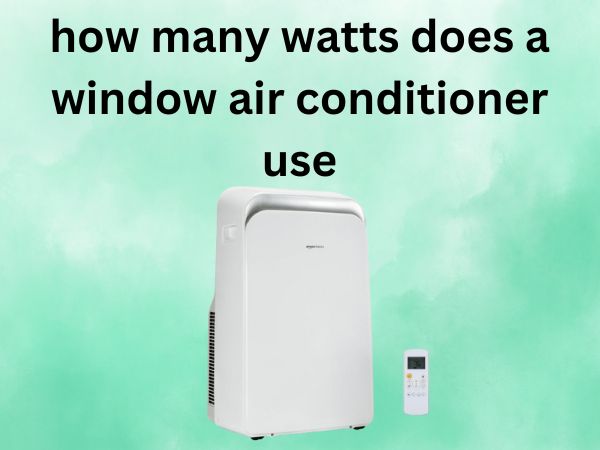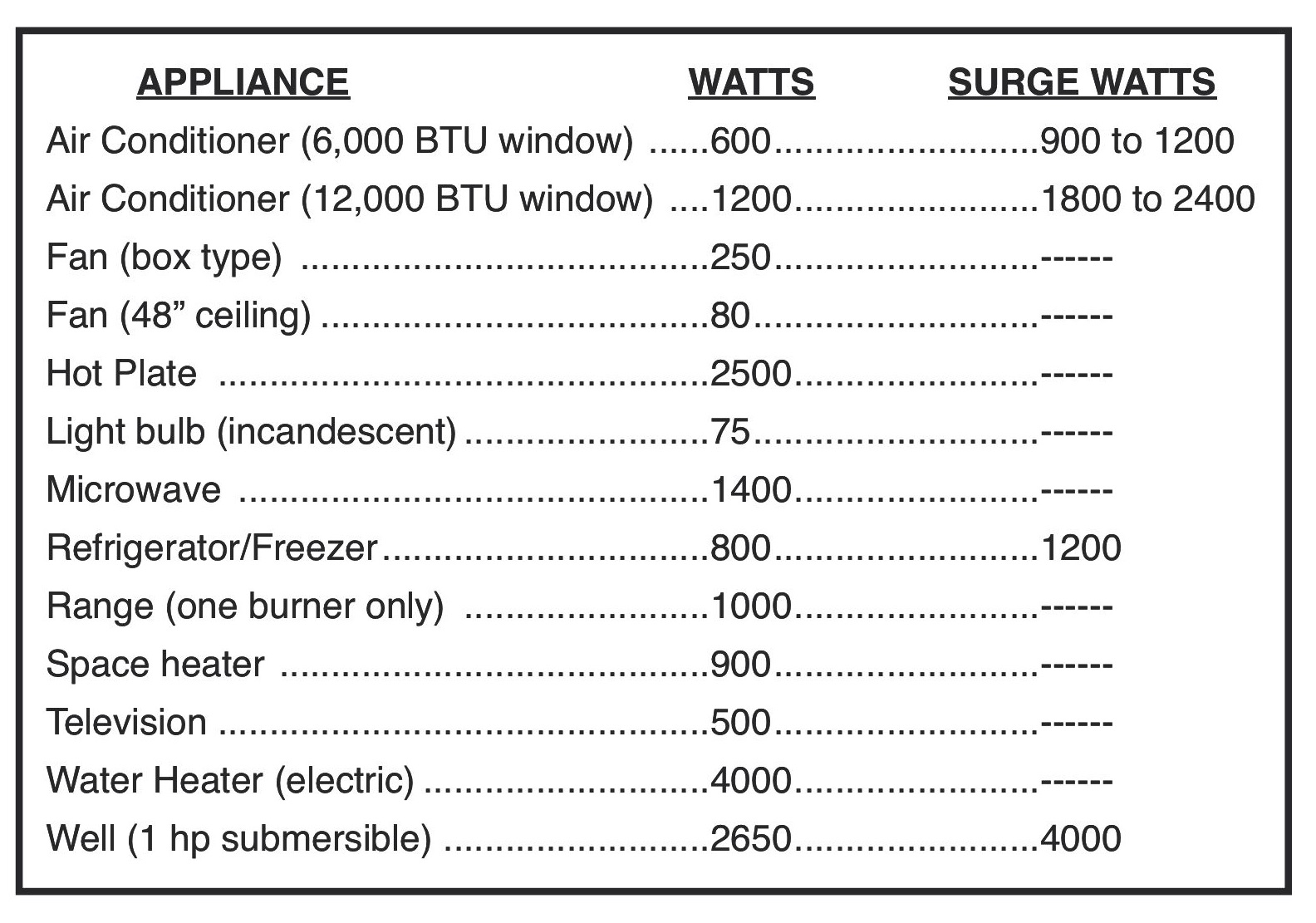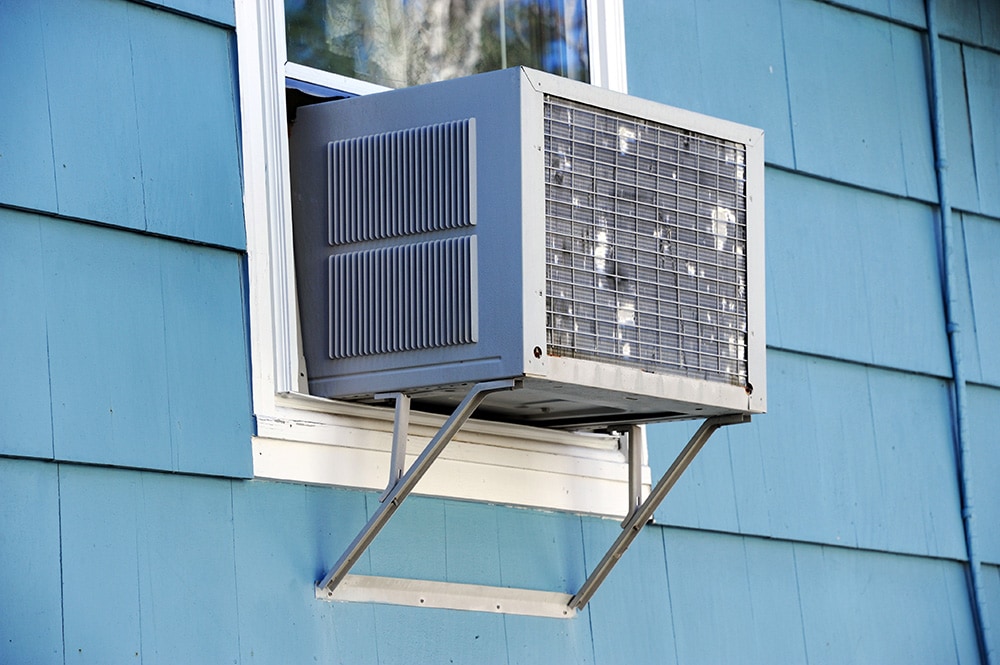How Many Watts Does A Ac Window Unit Use

Frequently Asked Questions About Window AC Unit Wattage
Understanding the energy consumption of your window air conditioner is crucial for managing electricity bills and making informed decisions about appliance usage. This FAQ provides answers to common questions regarding the wattage and power consumption of window AC units.
Question 1: How many watts does a typical window AC unit use?
The wattage of a window AC unit varies significantly depending on its size and cooling capacity, which is measured in British Thermal Units (BTUs). Generally speaking, you can expect a window AC unit to use anywhere from 500 watts to 1500 watts. Smaller units, designed for smaller rooms, will use less power than larger units intended for larger spaces. A very small 5,000 BTU unit might only use around 500-700 watts, while a larger 12,000 BTU unit could use 1000-1500 watts.
To get an accurate idea of the wattage your specific unit uses, always check the manufacturer's label. This label is typically located on the side or back of the unit and will list the power consumption in watts or amps. If the label lists amps, you can calculate watts by multiplying the amps by the voltage (usually 120 volts in the US).
Question 2: What factors influence the wattage consumption of a window AC?
Several factors can influence how many watts your window AC unit consumes:
- BTU Rating (Cooling Capacity): As mentioned before, the higher the BTU rating, the more power the unit generally consumes. Higher BTU ratings mean a more powerful compressor and fan, both of which require more electricity.
- Energy Efficiency (EER/SEER): Units with higher Energy Efficiency Ratios (EER) or Seasonal Energy Efficiency Ratios (SEER) are more efficient at cooling a space with less energy. Look for units with higher EER/SEER ratings to save on electricity costs. An energy-efficient unit will use fewer watts to produce the same amount of cooling as a less efficient model.
- Room Size and Insulation: A larger room will require the AC unit to work harder and longer, leading to higher wattage consumption. Similarly, a poorly insulated room will lose cool air quickly, forcing the unit to run more frequently and consume more power.
- Thermostat Setting: Setting the thermostat to a lower temperature will cause the AC unit to run longer and consume more watts. Raising the thermostat by just a few degrees can significantly reduce energy consumption.
- Fan Speed: Running the fan on a higher speed will increase wattage consumption compared to running it on a lower speed. Some units also have an "auto" fan setting, which adjusts the fan speed based on the cooling needs, potentially saving energy.
- Age of the Unit: Older AC units are often less efficient than newer models due to wear and tear and outdated technology. Replacing an old, inefficient unit with a newer, energy-efficient model can result in significant energy savings.
- Filter Condition: A dirty air filter restricts airflow, forcing the AC unit to work harder and consume more power. Regularly cleaning or replacing the air filter can improve efficiency and reduce wattage consumption.
Question 3: How can I estimate the monthly electricity cost of running my window AC?
To estimate the monthly electricity cost, follow these steps:
- Determine the wattage of your AC unit. Check the manufacturer's label or use the formula: Watts = Amps x Volts.
- Estimate the number of hours per day the AC unit runs. This will vary depending on your climate, thermostat settings, and personal preferences.
- Calculate the daily energy consumption in kilowatt-hours (kWh). Multiply the wattage by the number of hours per day and divide by 1000: (Watts x Hours) / 1000 = kWh per day.
- Calculate the monthly energy consumption in kWh. Multiply the daily kWh by the number of days in the month: kWh per day x Days in month = kWh per month.
- Find the electricity rate in your area. This is usually listed on your electricity bill in cents per kWh.
- Calculate the monthly cost. Multiply the monthly kWh consumption by the electricity rate: kWh per month x Rate per kWh = Monthly cost.
Example:
Let's say your AC unit uses 1000 watts, runs for 8 hours per day, and your electricity rate is $0.15 per kWh.
- Wattage: 1000 watts
- Hours per day: 8 hours
- Daily kWh: (1000 x 8) / 1000 = 8 kWh per day
- Monthly kWh: 8 kWh per day x 30 days = 240 kWh per month
- Electricity rate: $0.15 per kWh
- Monthly cost: 240 kWh per month x $0.15 per kWh = $36 per month
This is just an estimate, and your actual electricity cost may vary depending on the factors mentioned earlier.
Question 4: Are there energy-efficient window AC units available, and how do they compare in wattage consumption?
Yes, there are highly energy-efficient window AC units available. These units often have higher EER or SEER ratings. EER (Energy Efficiency Ratio) measures the cooling output of an AC unit divided by the power input in watts at a specific operating point. SEER (Seasonal Energy Efficiency Ratio) provides a more comprehensive measure of efficiency over an entire cooling season.
Energy-efficient models use advanced technologies like:
- Inverter Compressors: These compressors adjust their speed based on the cooling demand, consuming less energy than traditional compressors that cycle on and off at full power.
- Smart Features: Some units offer smart features like programmable timers, sleep modes, and Wi-Fi connectivity, allowing you to control and optimize energy usage remotely.
- Improved Insulation: Better insulation in the unit itself reduces heat gain, minimizing the workload on the compressor.
Compared to standard models, energy-efficient window AC units can consume 20-40% less energy. While they may have a higher upfront cost, the long-term energy savings can offset the initial investment.
For example, a standard 8,000 BTU window AC unit might use 700-800 watts, while an energy-efficient model with the same BTU rating could use only 500-600 watts. Look for the Energy Star label to identify energy-efficient models.
Question 5: Can using a window AC unit overload my electrical circuit?
Yes, it's possible to overload an electrical circuit with a window AC unit, especially if the circuit is already loaded with other appliances. Most household circuits are rated for 15 or 20 amps. An overload occurs when the total current draw of all appliances on the circuit exceeds the circuit's rating.
To determine if your AC unit might overload a circuit:
- Determine the amperage of your AC unit. If the label only lists wattage, divide the wattage by the voltage (usually 120 volts): Amps = Watts / Volts.
- Identify the amperage rating of the circuit. This is usually indicated on the circuit breaker in your electrical panel.
- Add up the amperage of all other appliances on the same circuit. This includes lights, televisions, computers, and other devices.
- Compare the total amperage to the circuit's rating. If the total amperage exceeds the circuit's rating, you risk overloading the circuit.
Signs of an overloaded circuit include:
- The circuit breaker trips frequently.
- Lights flicker or dim when the AC unit turns on.
- The circuit breaker feels warm to the touch.
- Burning smell from outlets or appliances.
To prevent overloading a circuit:
- Plug the AC unit into a dedicated circuit if possible.
- Avoid using other high-power appliances on the same circuit as the AC unit.
- Consider using a smaller AC unit with lower amperage requirements.
- Have an electrician inspect your wiring if you suspect your circuits are inadequate.
Question 6: How can I minimize the wattage used by my window AC unit?
Here are some tips to minimize the wattage consumption of your window AC unit and lower your electricity bills:
- Choose the Right Size: Select an AC unit that is appropriately sized for the room. An oversized unit will cycle on and off frequently, wasting energy, while an undersized unit will run constantly and struggle to cool the space effectively.
- Seal Air Leaks: Seal any air leaks around windows, doors, and other openings to prevent cool air from escaping and hot air from entering. Use caulk, weather stripping, or foam sealant to seal gaps and cracks.
- Insulate Your Home: Proper insulation in walls, ceilings, and floors can significantly reduce heat transfer, making it easier for the AC unit to maintain a comfortable temperature.
- Use Curtains or Blinds: Close curtains or blinds during the hottest part of the day to block sunlight and reduce solar heat gain.
- Clean the Air Filter Regularly: A dirty air filter restricts airflow, forcing the AC unit to work harder and consume more power. Clean or replace the filter every month or as recommended by the manufacturer.
- Use a Programmable Thermostat: Program the thermostat to automatically adjust the temperature when you are away from home or sleeping. Raise the temperature by a few degrees when you are not actively using the space.
- Use Ceiling Fans: Ceiling fans can help circulate cool air and reduce the need to run the AC unit as frequently.
- Consider a Smart AC Controller: Smart AC controllers allow you to remotely control your AC unit, set schedules, and monitor energy usage. Some models can even learn your preferences and automatically adjust the settings to optimize energy efficiency.
- Maintain Your AC Unit: Schedule regular maintenance to ensure that your AC unit is running efficiently. This may include cleaning the coils, checking the refrigerant levels, and inspecting the fan motor.
- Consider a Whole-House Fan: In milder climates, a whole-house fan can be used to cool the home at night by drawing in cool outdoor air and exhausting hot indoor air. This can reduce the need to run the AC unit during the day.
Question 7: Does the type of window (single-pane vs. double-pane) affect the wattage used by my AC unit?
Yes, the type of windows in your home significantly affects the amount of energy your AC unit needs to use to maintain a comfortable temperature. Single-pane windows offer very little insulation, allowing heat to easily transfer through the glass. This means that during hot weather, heat from outside will readily enter your home, forcing your AC unit to work harder and consume more watts to compensate.
Double-pane windows, on the other hand, offer much better insulation. They consist of two panes of glass with a layer of air or gas (such as argon) in between. This layer of air or gas acts as an insulator, reducing the transfer of heat through the window. As a result, double-pane windows help to keep heat out during the summer and heat in during the winter, reducing the workload on your AC unit and potentially lowering your energy bills.
The difference in performance can be substantial. Homes with single-pane windows may experience significantly higher energy consumption for cooling compared to homes with double-pane windows. Upgrading to double-pane windows can be a worthwhile investment, especially in climates with extreme temperatures, as it can lead to long-term energy savings and improved comfort.
Other window features, such as low-E coatings and window films, can also help to improve energy efficiency by reducing solar heat gain. Low-E coatings are thin, transparent coatings that reflect infrared radiation, helping to keep heat out during the summer and heat in during the winter. Window films can also be applied to existing windows to improve their energy efficiency and reduce glare.










